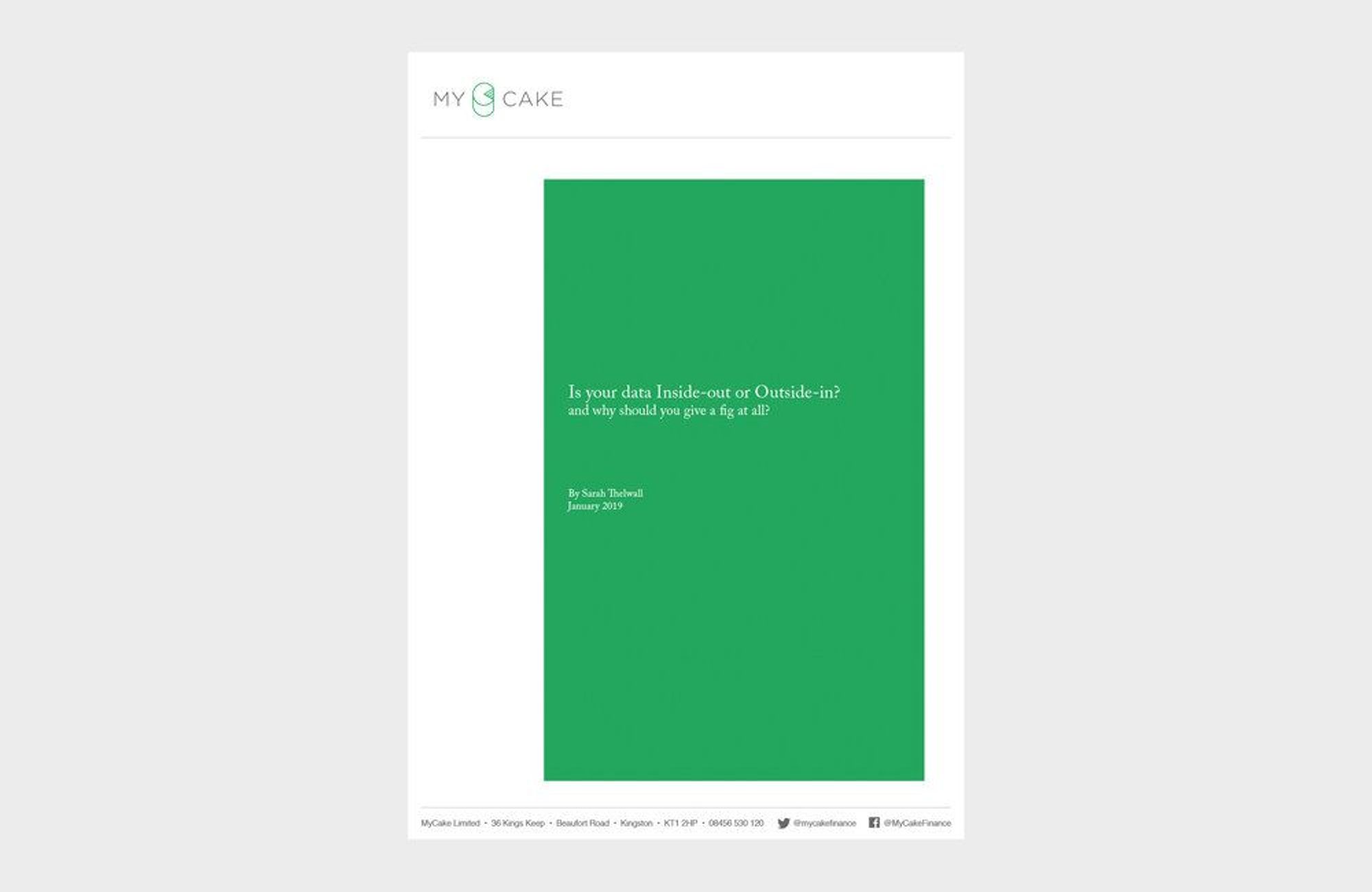Is your data Inside-out or Outside-in?

Sarah Thelwall

Here at MyCake we spend our days developing tools and services to help non-profit organisations make data and evidence informed decisions. In particular we specialise in making financial data (both yours and others) easier to bring into conversations about:
- Future strategy
- Your business model
- Opportunities for growth and development
- What your risks are and how you are managing them
- Resilience and sustainability
The output of this work comes in many forms; from short best practice guides to longer reports; from charts and visualisations to benchmark dashboards; from simple brightly coloured paper tools and wall charts to bespoke data analysis. Of course you also have access to data from multiple sources and often have the unenviable task of trying to compare and contrast quantitative information which will likely have been prepared using different and potentially conflicting methods and assumptions.
The purpose of this paper therefore is to unpack the main ways in which financial data is aggregated for the sectors we work in; provide a simply typology which sets out the uses and limitations of different data aggregation methods and explain what we think the appropriate maths is for the various end uses of the data. We recognise (as you might remember from maths lessons at school) that showing your working matters! We hope that this will help others involved in data gathering, processing and reporting as well as the end users of the data.
In our opinion understanding how data is aggregated and what aggregated data can and can’t do is absolutely fundamental if we are to help build non-profit sectors which can use data and evidence to support their decision making processes. Aggregated data is at the heart of all of the benchmarks we devise and our strategic consultancy about the role, importance and embedding of key metrics in the sectors in which we work.
Read the full report.